Main menu
Common skin conditions

NEWS
Join DermNet PRO
Read more
Quick links
Author: Vanessa Ngan, Staff Writer, 2005. DermNet Update August 2021
Introduction Demographics Causes Clinical features Complications Diagnosis Differential diagnoses Treatment Outcome
Piebaldism is a rare inherited disorder of pigmentation characterised by patchy leukoderma (white skin) and white hair (poliosis) present at birth.
The name piebaldism is derived from a combination of the “pie” as in the magpie (a bird of black and white plumage) and the “bald” of the bald eagle (the US national bird that has a white feathered head). Hence the major characteristic of piebaldism is a white forelock (a patch of white hair directly above the forehead).
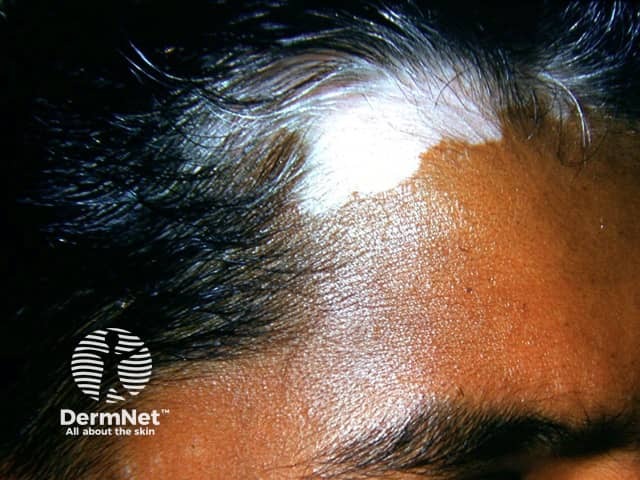
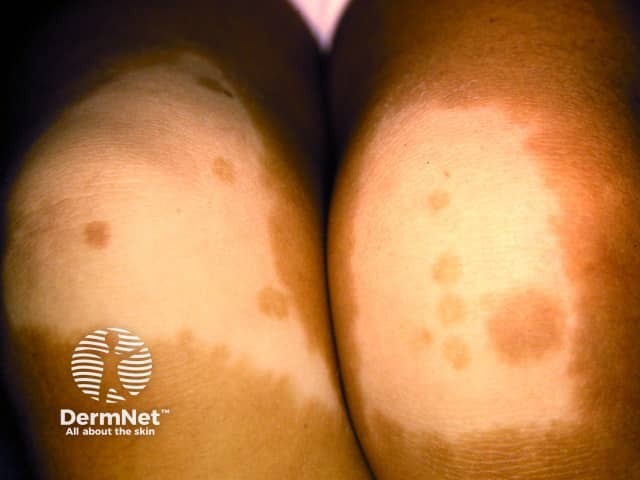
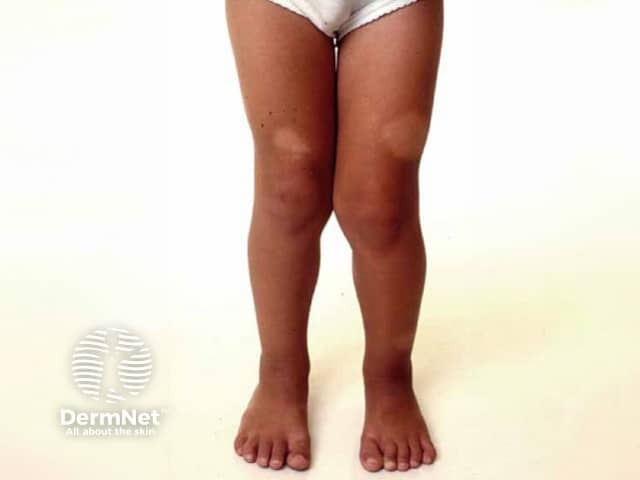
Piebaldism is an autosomal dominant genetic condition, so each child of an affected parent has a 50% chance of inheriting the disorder.
Piebaldism is a neurocristopathy caused by mutations of the KIT proto-oncogene on chromosome 4 account for75% of cases; over 45 different point mutations, deletions, nucleotide splice mutations, and insertions of the KIT gene have been identified. The KIT gene mutation causes aberrant migration of melanoblasts from the neural crest to the skin in the embryo resulting in patches of skin lacking melanocytes. The severity of the condition correlates with the specific mutation within the KIT gene.
The mild form may present with only small patches of leukoderma, whereas in more severe forms have the white forelock and larger white patches over the trunk and limbs.
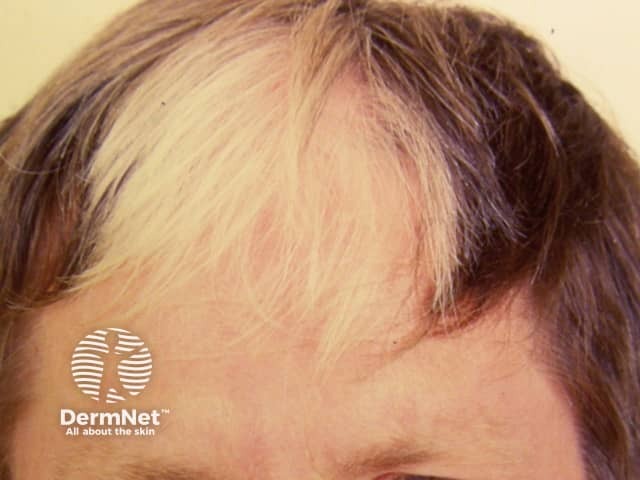
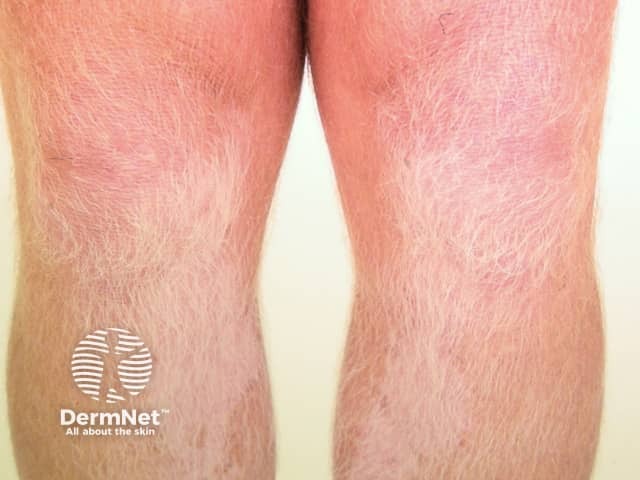
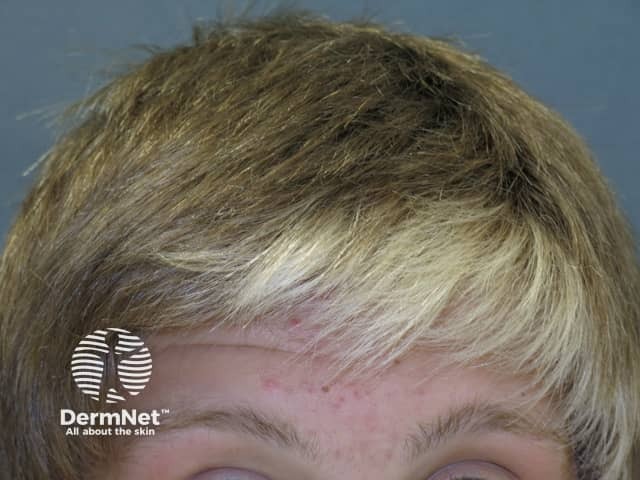
Piebaldism will be suspected clinically at birth or soon after.
Skin biopsy from the leukoderma in patients with piebaldism demonstrates complete lack of melanocytes and melanin pigment.
Genetic testing on peripheral blood can confirm the diagnosis.
Patients must be educated about the use of sunscreens, sun protective measures, and sun avoidance during peak hours of UV exposure, and self skin examination to detect skin cancer.
Patients who are self-conscious about their appearance may benefit from the following treatments:
Cosmetic camouflage techniques can cover the pigment changes of hair and skin.
Piebaldism is present at birth and the pigment changes usually remain unchanged throughout life. Pigmented dots and macules may develop at the margins or within the patches of leukoderma. The leukoderma may be progressive in rare cases.